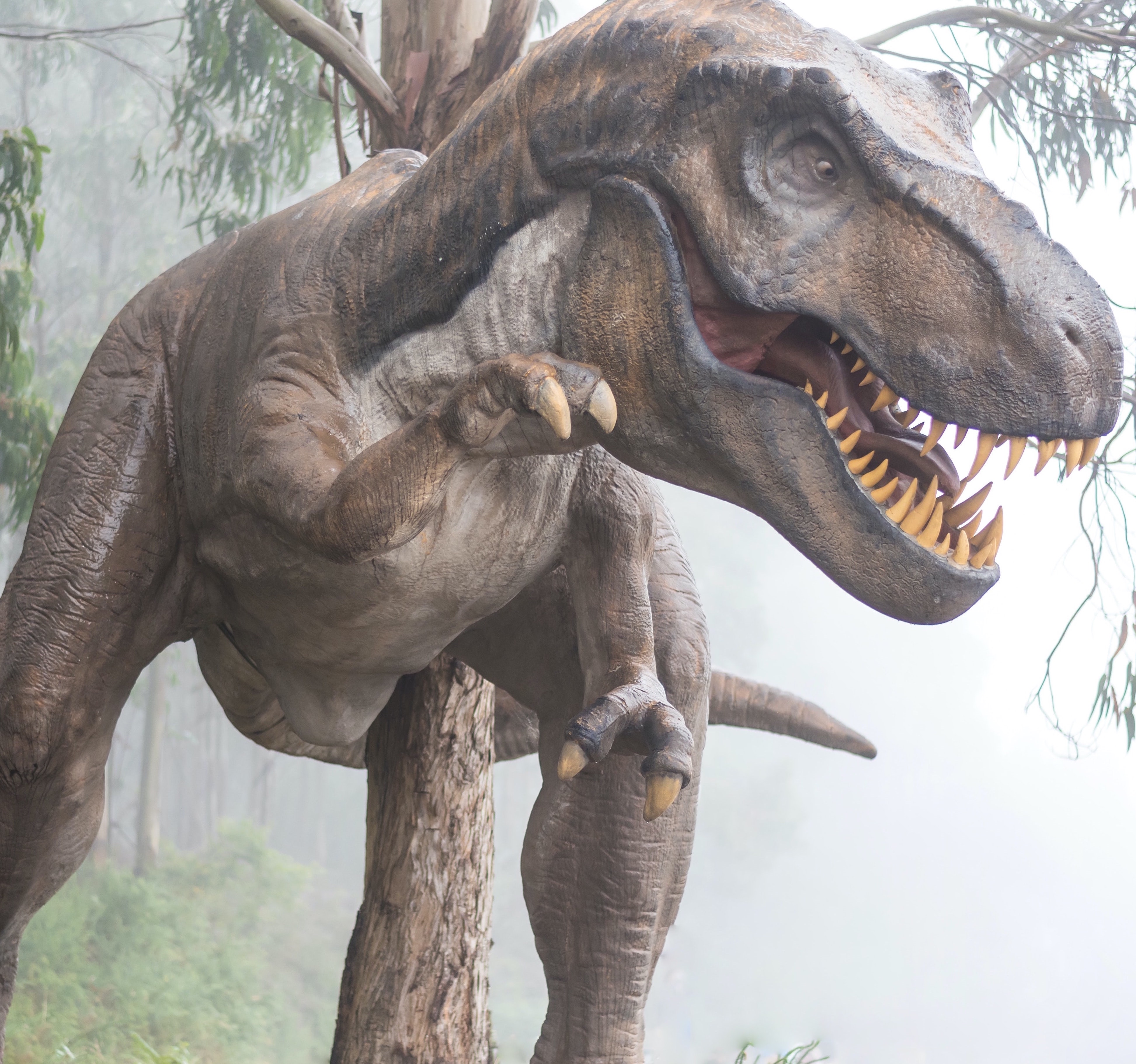Words by Tarryn Basden
Tarryn has been contributing to entropy since 1988
No, it’s not the new Jurassic Park movie (though the thought of Chris Pratt saving a colony of moon settlers from a rampaging space T-Rex does sound exciting). Dinosaurs could actually be on the moon! Well, parts of them anyway.
Adding to all the ways that dinosaurs are cooler than humans, they even beat us to the moon! Arguably, one of the greatest things humans have ever accomplished (second only to the invention of tacos), and we were beaten by giant lizards with mushy tennis balls for brains.
True, they didn’t go there voluntarily. Nor did they have any of the fancy new safety measures that humans insist on. And they certainly didn’t survive the journey. But gosh darn it, they beat us there.
How did these reptilian adventurers make the journey that took humans so long to accomplish? Let’s start at the beginning, which also happens to be the end.
*Cue Jurassic Park theme music*
Sixty-five million years ago. The sun is shining. Small, probably feathered dinosaurs are skittering amongst the foliage looking for snacks.
If one were to look up, they might see a star a little brighter than the others, and slowly getting brighter. Of course, their walnut brain wouldn’t comprehend this, so off they go looking for more snacks. Completely oblivious to the chaos about to befall them.
Around sixty hours later, a meteorite bigger than Donald Trump’s opinion of himself began its descent like a confused pot of petunias.
Moving at 73,000 kilometres an hour, it smashed into the atmosphere so fast, it compressed the air in front of it. This created a supersonic shockwave with the pressure so high that it was hotter than the sun and began carving out a crater before the meteorite had even touched Earth.

Pummelling into the ground, it decimated everything in its path like an angry Hulk playing Jenga. But the story doesn’t end there.
In front of the meteorite was incredibly high pressure. While behind, it had punched a hole through the atmosphere, creating a massive area of vacuum. Anything that was Hulk-smashed was then sucked back in. So much stuff got sucked into the void, that some of it were blasted out into space like a party popper powered by a grenade. This included dirt, microbes, plants, and even our snacking little dinosaur friends.
Chunks of dinosaur steak were sent shooting through the air, reaching escape velocity, and even landing on the moon. Most of the dinosaur chunks would have been vapourised. But some parts, like their incredibly strong and sturdy teeth, could have survived the ordeal.
The best part about all this? There is no atmosphere on the moon. There are no water or geological processes. No bacteria to break things down. Nothing to destroy whatever is up there. So, these bits of dinosaurs are still up there, chilling on the moon, maybe right under Neil Armstrong’s footprint. So, if a shark tooth necklace isn’t badass enough for you, maybe jump in a rocket with Jeff Bezos and go collect yourself some dinosaur teeth.

